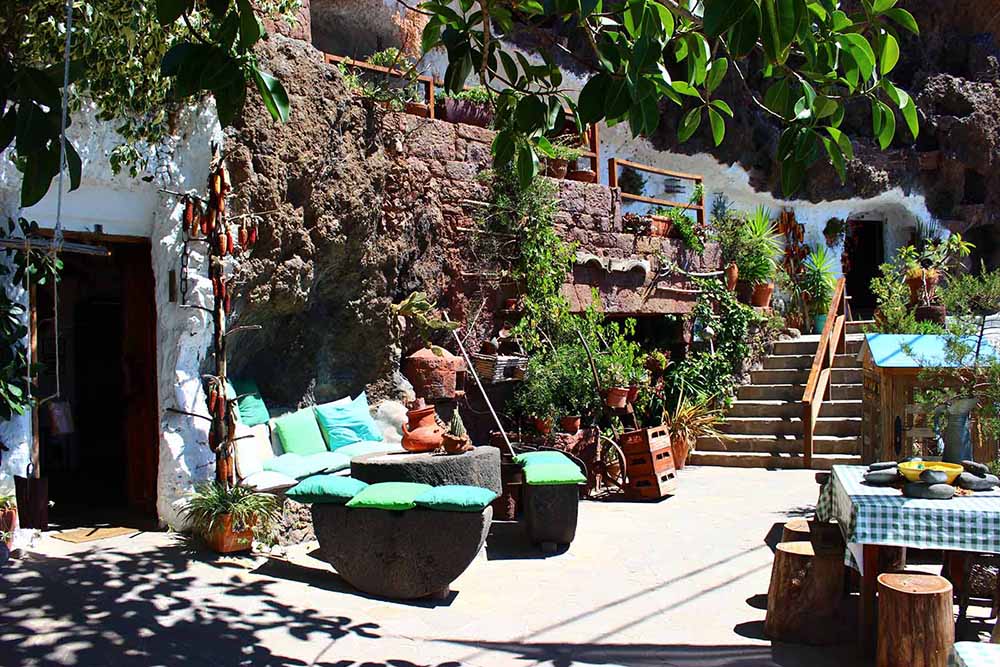In this cave, we are trying to show the lifestyle of a working family with few economic resources. The main room of this cave has 3 sections which have been excavated with iron picks. Nothing is visible of the original excavated cave.
After the cholera epidemics of previous centuries and according to custom, the caves are whitewashed each year with quicklime to disinfect against infections and also to increase the brightness as there are no windows. The furniture is very simple.
The smaller rooms were mainly used for sleeping, the beds are made of English iron from left to right for the sons, parents and daughters. The bedspreads are made of cotton, chenille and net. The bedroom of the daughters always has an image of San Antonio, protector of the bride and groom.
The floors were formerly made of earth (today plastered with cement), to control the humidity, the beds were higher, to help air circulation, and under them they hid things such as “potties”. Mats woven from palm leaves also helped protect against the dampness from the earth floors.
There is a water filter in a niche, this water filter is a carved sandstone bowl, supported by a simple wooden frame, to filter natural spring water into an earthenware vessel. This sandstone would have come from the Las Canteras area of Las Palmas. Under the filter is an earthenware water container for keeping the purified and chilly water fresh.
The display cabinet on the right shows the pottery used by the family.
By the side of the water filter we have a prayer table prepared for when a priest was called, in the event of illness or death. The central table is made of wood, it is called "tocinera" because it was taken out to the patio and one of its uses was to carve a black pig on it when needed twice a year. The chairs are made of chestnut and the traditional form of palm leaves for the seats. Two small boxes or tea chests were where clothing, blankets or objects of value were kept.
If you have the time there is the opportunity to have a photograph taken dressed in the typical clothes from Artenara (traditional black hat, shepherd’s blanket, or skirt etc.) that are available here.-
